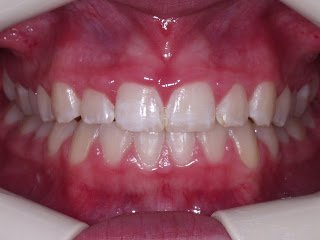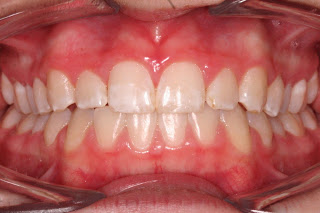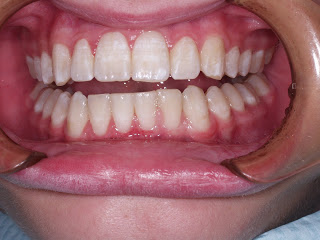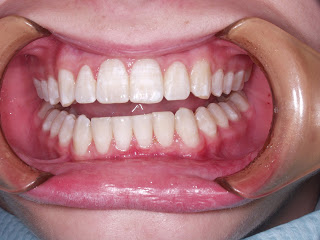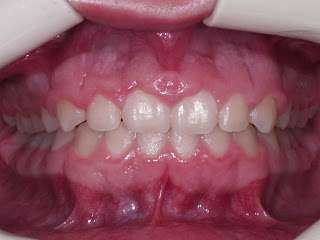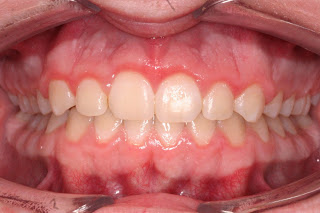
One of the things that really sets Richard Chan Orthodontics apart is our high-tech approach. When I find a proven advance in orthodontics that can bring about amazing results while making patients more comfortable or making their treatment more convenient, I embrace it. For over a decade, one of my favorites has been the orthodontic laser. It’s enabled me to safely, painlessly and quickly do everything from exposing teeth that are slow to erupt to improve the aesthetics of a gummy smile. Today, I’m covering the basics of lasers in orthodontics to help you get a better idea of how they can be a useful tool to really transform your smile.
What is an Orthodontic Laser?
A dental or orthodontic laser relies on light energy to do a variety of jobs. Laser is actually an acronym for “Light Amplification by Stimulated Emission of Radiation.” It works by serving as a cutting instrument or by vaporizing tissue. That might sound kind of scary but it’s so gentle you usually won’t even require a needle or anything beyond a topical anesthetic when we use it for a procedure.
There are several different types of lasers, including those that work on hard tissues and can do the job of your dentist’s drill. However, when it comes to lasers in orthodontics, we’re generally talking about soft tissue lasers like the diode laser. Because the light from a diode laser isn’t absorbed well by hard tissue, it’s excellent for procedures involving the soft tissues in your mouth like your gums, as it gives us maximum precision and won’t damage the teeth.
What are Some of the Common Uses for Lasers in Orthodontics?
A big reason I love lasers is that they’re an extremely versatile tool. Here are some of the common uses of our soft tissue laser:
- Exposing teeth that are slow to erupt – If your child is ready to get braces but a tooth hasn’t erupted on schedule or not enough of the tooth is exposed to place a braces bracket, sometimes, I can use a laser to remove the gum tissue and reveal the tooth. This can prevent us from waiting months for a slowpoke tooth to make an appearance on its own and eliminate the need for a traditional oral surgery procedure.
- Esthetic gingival recontouring – Esthetic gingival recontouring, sometimes called laser gum contouring, is doctor-speak for using the laser to remove and reshape excess gum tissue. For example, if your gums come too far down and are covering too much of your teeth, the teeth can look short or it can create the appearance of a “gummy” smile. With laser gum contouring, I can remove the extra gum tissue and reshape what’s left to give you the perfect frame for your newly aligned teeth. It will bring about a balance between the teeth and gums for a more esthetic smile.
- Frenectomy – There are two kinds of frenums – a lingual frenum and a labial frenum. The lingual frenum is that piece of tissue that runs from the base of the tongue to the bottom of the mouth behind the lower teeth. Sometimes, the size or position can restrict the movement of the tongue, making speech difficult or, in infants, interfering with nursing or bottle feeding. The condition is called “tongue-tied.” Using the laser, an orthodontist or dentist can quickly and painlessly free the tongue to allow a normal range of motion.
More commonly in my practice, I perform labial frenectomies. The labial frenum is the tissue that goes from the gums above the upper front teeth to the lip. If it’s overly long or wide, it can actually create an unwanted space between the front teeth. With an orthodontic laser, I’m able to eliminate the tissue between the teeth so that I can close the gap with braces or Invisalign.
- Removal of tissue tags – Sometimes, tissue tags can form in the mouth. These little growths are typically benign and harmless but their appearance can bother some patients. The diode laser can get rid of them in seconds without any discomfort.
- Reducing the pain or severity of aphthous ulcers – Aphthous ulcers, also known as canker sores, are lesions that form in the mouth and along the base of the gums. They can be painful and orthodontic appliances can rub against them causing even more irritation. An orthodontic laser can help speed up healing time and alleviate some of the pain or severity of the sores.
- Removing Excess Gum Tissue to Place Appliances like TADs – Occasionally, excess gum tissue can get in the way of placing appliances, such as temporary anchorage devices. I can use the laser to remove extra tissue to make space for the appliance.
I have included some before and after photos of actual patients who recently underwent procedures with our laser.
CASE 1:
This patient did not like the square and bulbous tissue around her teeth after her braces came off.
This is the result after 2 weeks. No bleeding, minimal soreness, and no shots during the procedure. The patient was very excited.
CASE 2:
The patient had an extra little tissue tag that really bugged him. You can see it between two of his bottom front teeth. Of all the options to remove it, the laser was definitely the easiest, with no shots, no bleeding, and no pain.
This picture was taken immediately after the laser removal. It took just minutes!
CASE 3:
This patient has had a history of thick, fibrous gum tissue, even before orthodontic treatment. She did not like the aesthetic look of her smile.
As you can see, there was a huge difference from the laser treatment! The patient is very happy with her smile now. The procedure was done with only some topical numbing solution (no shots!), and there was no bleeding afterward.
What are the Benefits of Orthodontic Laser Treatment?
There are a host of benefits of orthodontic laser treatment as compared to taking a traditional approach, which would usually involve a scalpel or a drill. The laser is:
- Gentle and virtually painless. In most cases, no needles are necessary. I can often just apply a topical anesthetic. You won’t feel anything but the laser moving.
- Excellent for patients with dental anxiety or a fear of needles. Since needles aren’t usually involved and the laser takes the place of tools like scalpels, it can go a long way in making patients feel less anxious.
- Minimizes bleeding and swelling. This is an especially big plus for procedures like laser gum surgery because you won’t have a lengthy healing period or have to spend time away from work or school.
Is Orthodontic or Dental Laser Treatment Safe?
Lasers in orthodontics are safe for all ages and have been used for dental applications since 1994. A laser is extremely precise and we can perform procedures without worrying about damaging surrounding tissue or the teeth. Because dental laser treatment is so gentle, many times, it’s the option of choice even for infants and young patients.
Want to learn more about the high-tech orthodontic treatments I offer as an Alaskan and Bothell, Monroe and Mill Creek orthodontist? Or, would you like to see if a laser can help you get a picture-perfect smile? Schedule a free consultation at Richard Chan Orthodontics today!
